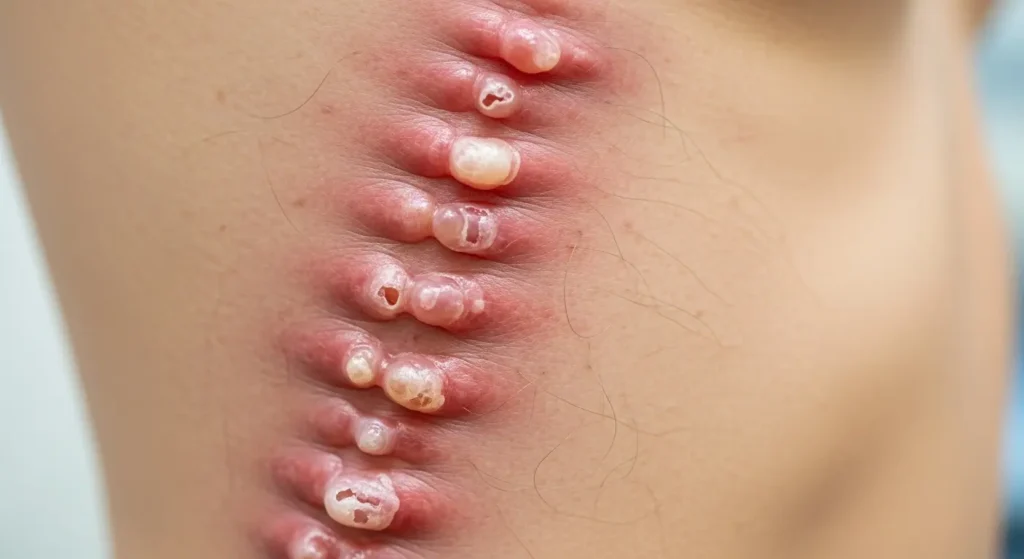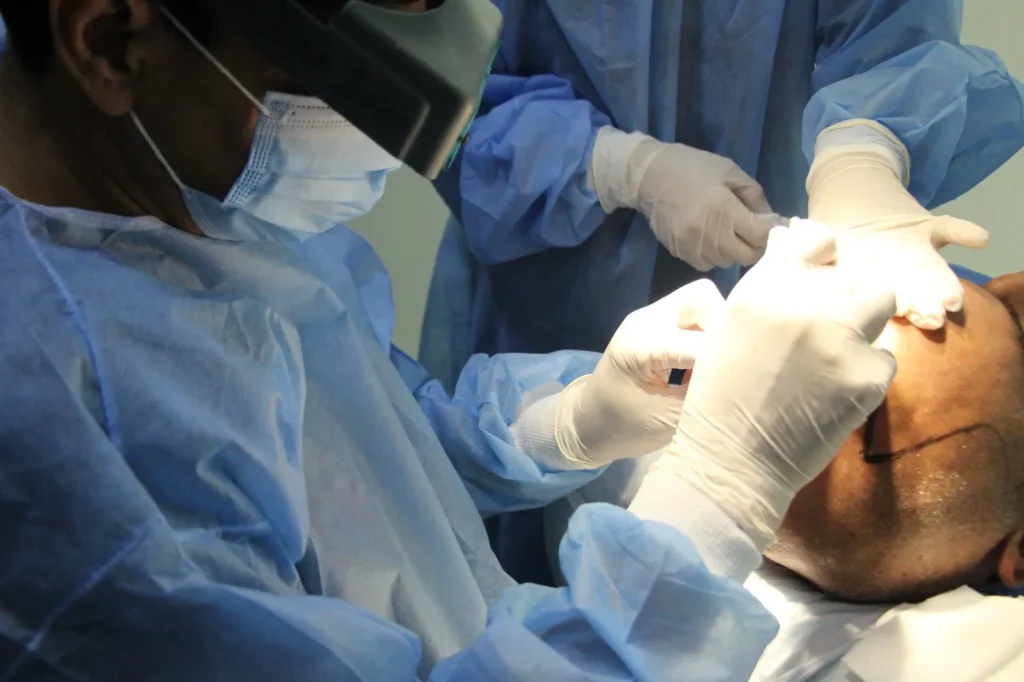Are you noticing hair shedding after a bout of shingles and wondering, “Can shingles cause hair loss”? You’re not alone. Shingles, especially on the scalp, can disrupt hair follicles and trigger temporary or even permanent shedding.
In this article, we’ll explain how shingles may lead to hair loss, what recovery looks like, and when you should seek expert care. You’ll learn the difference between temporary and permanent loss, treatment strategies, and prevention tips—so you can make informed choices with confidence.
What Is Shingles and How Does It Affect the Scalp?

Definition of Shingles (Herpes Zoster) and Symptoms
Shingles, also called herpes zoster, is a painful skin condition caused by the reactivation of the varicella-zoster virus (the same virus that causes chickenpox). Symptoms typically include:
- A red, blistering rash
- Burning or tingling pain
- Itching and skin sensitivity
- Flu-like symptoms in some cases
Why Shingles May Occur on the Scalp
While shingles can appear anywhere on the body, outbreaks on the scalp and face are particularly troublesome. Because the virus affects nerves, shingles on the scalp can cause:
- Intense pain
- Nerve-related burning or stinging
- Secondary irritation from scratching
Common Complications with Scalp Shingles
When shingles affect the scalp, complications can include:
- Postherpetic neuralgia (PHN): persistent nerve pain even after the rash clears
- Secondary infections: from scratching open blisters
- Hair follicle damage: leading to patchy hair loss
How Shingles Can Cause Hair Loss
Inflammation and Follicle Damage
Shingles triggers a strong inflammatory response. This inflammation can damage hair follicles, leading to zoster-associated focal alopecia (localized hair loss).
Scarring Alopecia (Cicatricial Alopecia)
In severe scalp infections, the blisters may heal with scarring. Once a follicle is destroyed by scar tissue, the hair loss is permanent. Early treatment is crucial to prevent this outcome.
Telogen Effluvium (Stress-Induced Shedding)
Even if the scalp isn’t scarred, the stress of shingles on the body can trigger telogen effluvium, a condition where many hairs shift into the shedding phase. This causes diffuse hair thinning, but regrowth usually occurs within months.
Medication-Related Hair Loss (Rare)
Antiviral medications used to treat shingles are generally safe. However, in rare cases, stress from treatment combined with illness may contribute to increased hair shedding.
Temporary vs. Permanent Hair Loss — What to Expect
Temporary Shedding and Regrowth
- Most cases of shingles-related hair loss are temporary.
- Hair typically begins regrowing within 3–6 months after recovery.
Permanent Loss from Scarring Alopecia
- If shingles causes scarring alopecia, the follicles are permanently damaged.
- A scalp biopsy by a dermatologist may be needed to confirm this.
Recovery Factors
Hair regrowth depends on:
- Age and immune strength
- Severity of the infection
- Timeliness of antiviral treatment
Treatment & Recovery Strategies for Hair Preservation
Prompt Antiviral Treatment
Doctors usually prescribe antivirals (such as acyclovir or valacyclovir) within 72 hours of the outbreak. Quick treatment reduces both pain and the risk of complications like scarring and hair loss.
Gentle Scalp Care During and After Shingles
- Wash hair gently with mild shampoo
- Avoid scratching or picking blisters
- Keep the scalp clean and moisturized
Stimulating Hair Regrowth
If shedding occurs, options include:
- Topical minoxidil for regrowth stimulation
- Low-Level Laser Therapy (LLLT) for scalp healing
- PRP therapy to support follicle recovery [Link to: PRP for Hair Loss in Islamabad]
Specialist Evaluation
Consulting a dermatologist or trichologist is highly recommended if hair loss continues after shingles. Diagnostic tools such as trichoscopy or biopsy can help determine whether follicles are intact.
When to See a Specialist
Seek medical advice if you notice:
- Persistent bald patches after shingles recovery
- Severe pain or ongoing scalp sensitivity
- Thickened, scar-like patches on the scalp
A dermatologist or hair loss specialist can recommend treatments or in cases of scarring alopecia, discuss surgical options like a hair transplant.

Prevention & Long-Term Hair Health
Shingles Vaccination
Vaccination with Shingrix significantly reduces the risk of shingles and its complications, including potential hair loss.
Boosting Immune Health
- Eat a balanced diet
- Manage stress
- Maintain proper scalp hygiene
- Get adequate sleep
FAQs: Quick Answers
Can shingles on the scalp make you lose hair?
Yes, scalp shingles can cause localized or diffuse hair shedding due to inflammation and follicle stress.
Will my hair grow back after shingles?
In most cases, hair regrows within 3–6 months. However, if scarring alopecia develops, the loss may be permanent.
How long till hair regrowth after shingles?
Regrowth usually begins within a few months once the scalp heals and inflammation subsides.
When is hair loss permanent?
If scarring occurs in the follicles, the loss is irreversible. A biopsy may confirm this.
Protect Your Hair & Scalp Health
If you’re experiencing hair loss after shingles, don’t wait until it becomes permanent. Early intervention can save follicles and restore your confidence.
👉 Book a consultation with Dr. Rana Irfan in Islamabad today for personalized treatment and scalp recovery guidance. Our clinic offers advanced diagnostics, medical therapy, and restorative options to help you achieve the healthiest possible outcome.
